Interview with artist Linda Lopez
Linda Lopez is a ceramic artist living and working in Fayetteville, Arkansas. Her extraordinary objects transform the unnoticed into the whimsical creatures she sees in them. You just can’t help but smile and be amazed and want to hug them. Linda is in high demand, not just to exhibit her work, but also to share her technical expertise through lectures and workshops around the US and elsewhere. Her work can be found at Mindy Solomon Gallery in Miami, Florida, David B. Smith Gallery in Denver, Colorado, and at her website lindalopez.net.


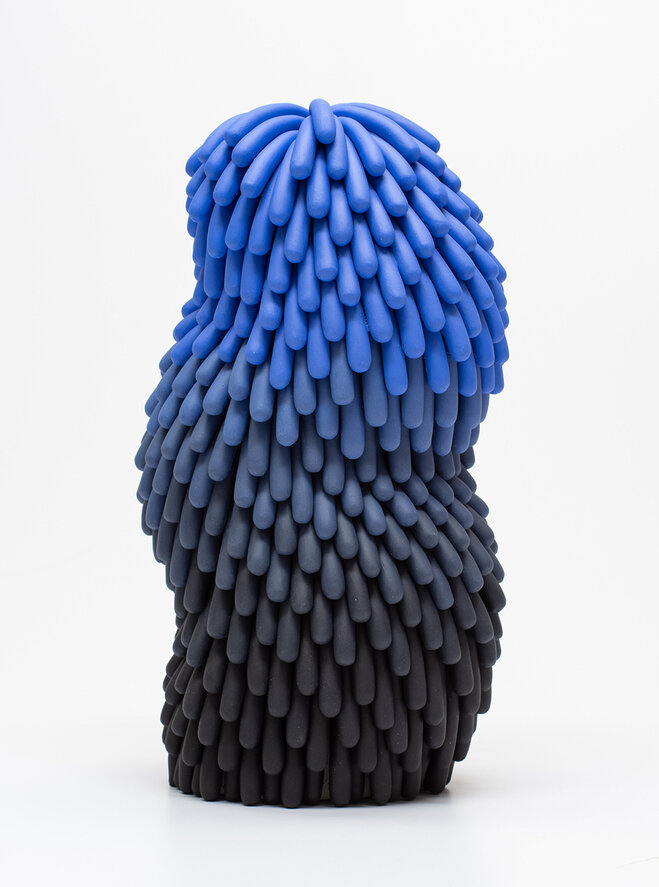
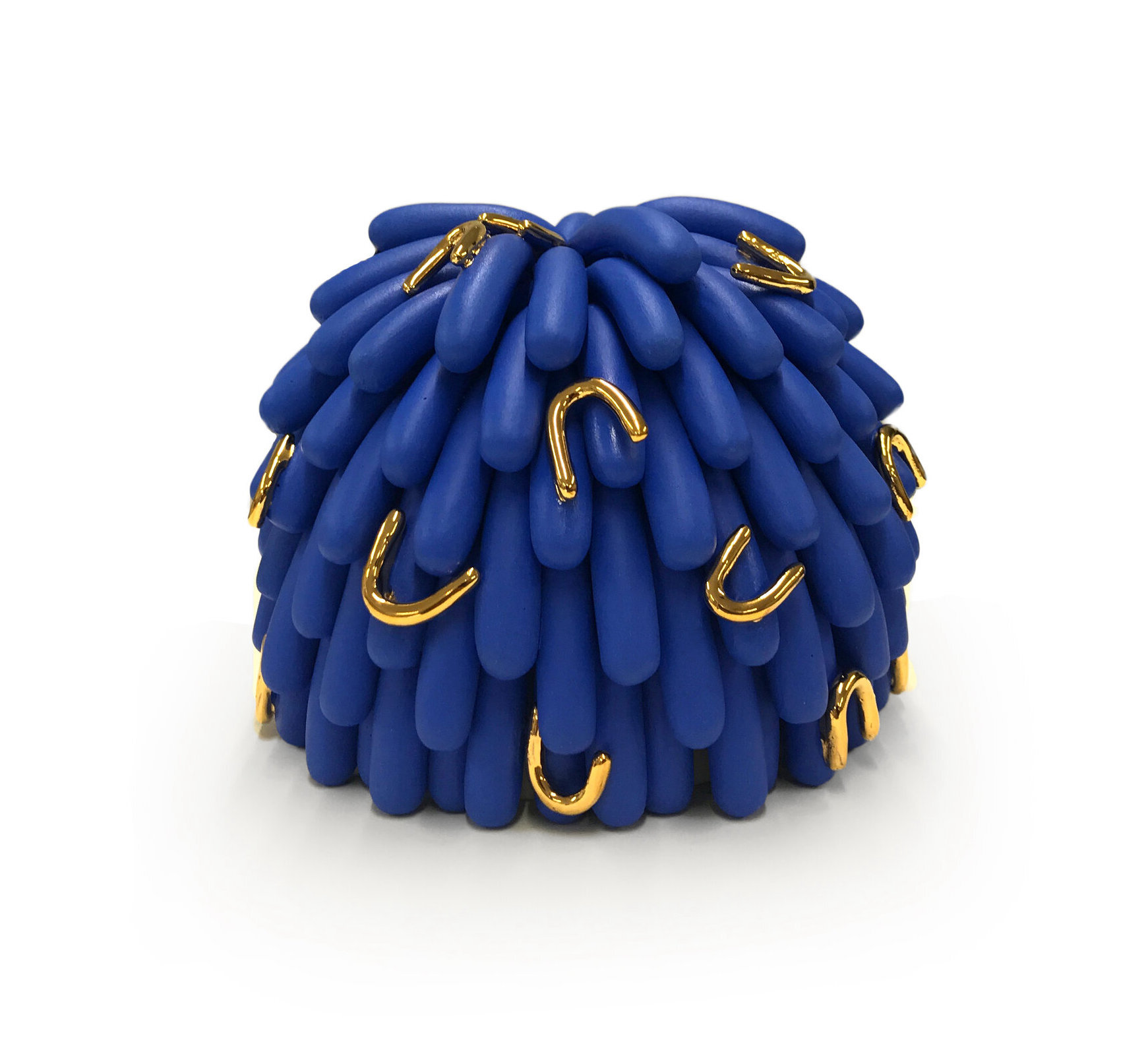
ASS: Linda, in your bio you say you are a first-generation American artist – your parents are Vietnamese and Mexican – and you were born in California. How did you end up at the University of Arkansas in Fayetteville?
LL: I was born in Visalia, California, which is known for being the Gateway to the Sequoias. Sequoias National Park, home to General Sherman, the world’s largest tree by volume, was about an hour away. I actually grew up in a small town just outside of Visalia called Ivanhoe, which was nestled at the foothills surrounded by citrus farms. I went to the community college in Visalia right after high school where I took my first art related course. I then transferred to California State University of Chico in Northern California for my bachelor’s degrees in Studio Art in Ceramics and Art Education. I took a year off and traveled around the US and Vietnam. I then headed off to graduate school at the University of Colorado at Boulder where I meet my partner. He was a year ahead of me and went off to New Zealand and then Montana before landing at the University of Arkansas as Visiting Assistant Professor of Art. He was here for a year, while I lived in Philadelphia as a resident artist at The Clay Studio. In 2012, we married, and I joined him in Fayetteville. When I first moved to Fayetteville, I taught a couple art classes at the UofA and was a part-time educator at Crystal Bridges.
“My work is all about animating the inanimate.”
AAS: Were your parents artists? How did ceramics become your art medium?
LL: My parents were not professional artists, but crafty. My father would weld scrap metal together into folk art sculptures and set them around the yard. My mother was a baker on her days off. She made cakes for all occasions and I remember being mesmerized by her steady hand making flowers for the decorations. She also made a lot of my clothes while I was in elementary school.
I discovered art a little later than most in college. I didn’t take my first studio art class until my junior year of college. That semester was life changing and I found ceramics to be so challenging conceptually and technically. So, that’s what got me hooked.
AAS: The shapes and forms and colors of your ceramics, particularly the Furry series, are just wonderful. Do they start out as sketches or do they just develop on their own as you start to create them?
LL: I look at the silhouette of objects around me to find inspiration. Then do a lot of sketching and doodling to figure out where to start. As for the color, this takes many tests and adjustments to find the correct percentages of stains to get the proper hue and value scale for a smooth transition in a color blend.
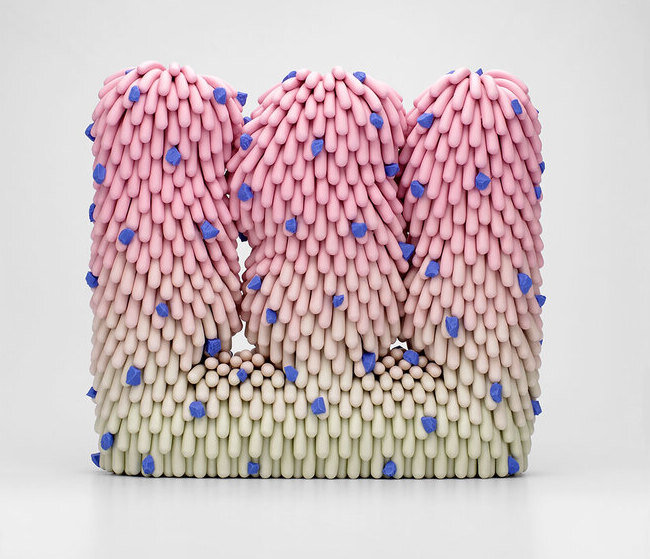
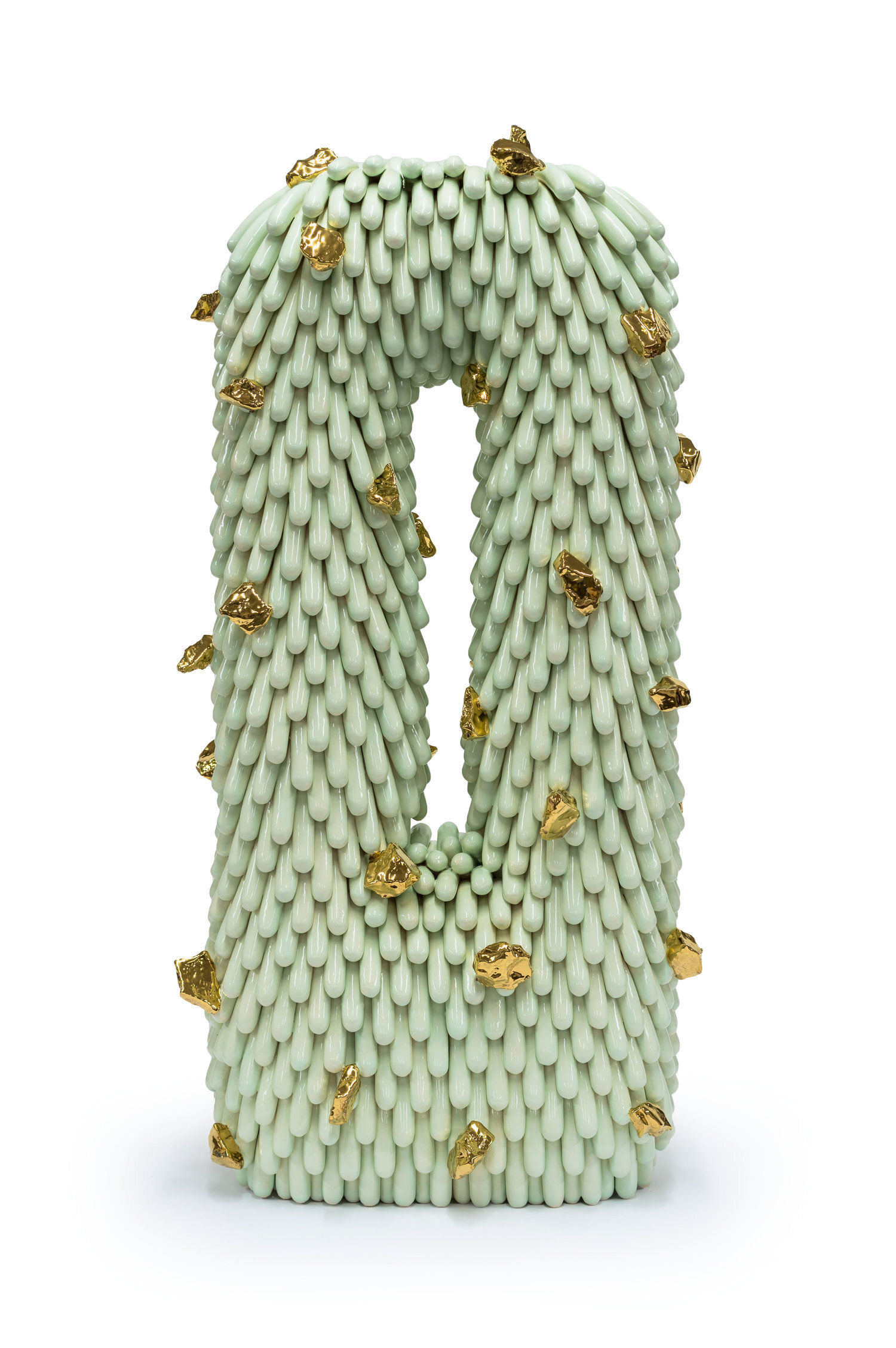
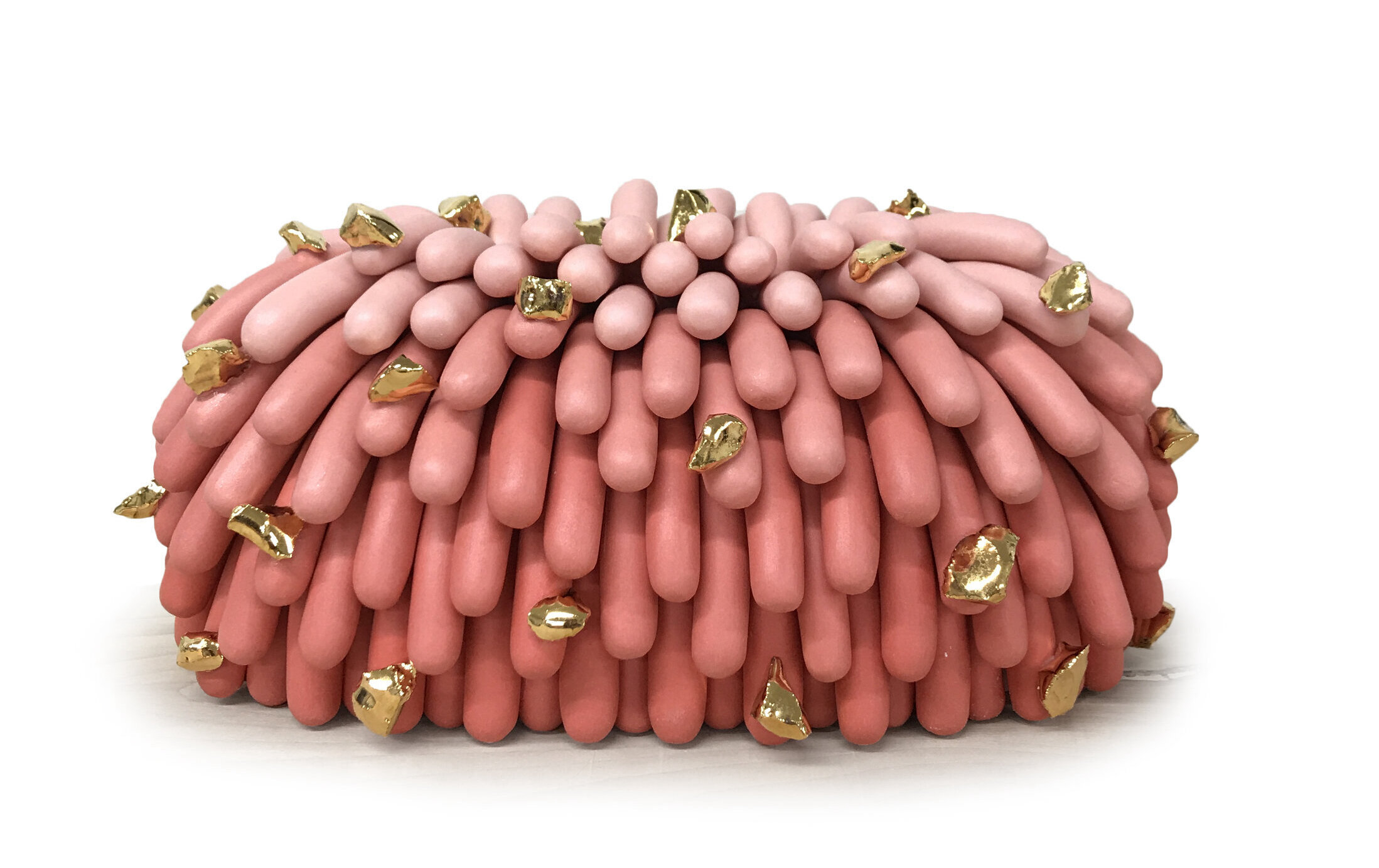

AAS: Would you talk about your technique and why do you mostly use earthenware?
LL: I use both earthenware and porcelain. Scale determines what clay I use for the sculptures. The earthenware allows me to fire to a lower temperature and make larger works. I mainly use low fire commercial glazes on my earthenware works. I often adjust them by layering different colors, adding stains, or mixing the glazes together. I tend not to follow rules and experiment until I find something that works.
The porcelain allows me to do gradients in the clay color, but the work has to be a smaller scale, since porcelain has the tendency to move and slump in larger forms. Each individual piece of fur is rolled by hand and attached to a hollow form. After firing, I will do any glazing or lustering if needed. I don’t really have any special tricks or secrets. Anyone can make this work! It just takes a lot of testing for colors and practice.
AAS: I have to ask. People who see your work in person must want to reach out and touch and hold them. Are you concerned about that? Are they very fragile?
LL: The work is fragile, since it is ceramic. It won’t break if someone touches it gently, but I would prefer if people didn’t. Some of the glazes are sensitive to oils on the skin. I do want people to see them as alive or animated. My work provokes empathy for objects, so when someone brings these furries into their home, I hope that they can start to see the interactions between the furry and the objects around it. They are now creating the narrative for the furries’ new life.
Shivering Dust Furry with Gold Rocks, 20” x 18” x 5.25”, earthenware
AAS: I just can’t help but giggle when I look at Shivering Dust Furry with Gold Rocks. Would you talk about that piece?
LL: My work is all about animating the inanimate. So just think about all those objects that are cold! Seeing objects as alive has roots to my childhood. My mother would often animate objects through language, such as telling me a toilet would choke if we put too much toilet paper in the toilet. This sense of life opened up a new perspective to everything around me.
Green/Blue Ombre Dust Furry with Logster Cutouts, 8.5” x 9” x 4”, porcelain
AAS: Green Blue Ombre is another of my favorites. This one has a matte finish and is so charming and almost cartoon-like.
LL: The matte finish is due to the colored porcelain. There is no glaze on the green/blue and the individual parts are colored all the way through the clay. Ombre is a term used for a particular hair style. I was actually getting this done to my hair when I realized I could also do this to the “fur” of my work. This piece also includes cut-outs inspired by my daughters scraps she leaves behind from her art table. My Dust Furries often have little bits of detritus such as lint, finger nails, cut outs, rocks, and stuff like that!
Headspace Lamp, 8.75” x 6” x 6”, ceramic, grout, lamp parts, gold leaf
AAS: Of course, you create amazing pieces that are not in the Furry style. I really love Headspace Lamp, which was featured this year in the New York Magazine’s The Cut Design Hunting section. What inspired that piece and how did it end up in the magazine?
LL: The lamp was a response to a show I was invited to called “Essential Goods” at Fisher Parrish Gallery in Brooklyn, New York. At the beginning of shut down, they asked artists to make work they deemed essential during this time. Since our daily routine was turned upside down, we had to be agile in in our shift to make a virtual curriculum, juggle a toddler, and continue to make studio deadlines. I would have sleepless nights trying to puzzle the next day together. So, for me, a lamp was needed for long nights of being stuck in my head. This lamp has lead me to a new Headspace series that I am excited to explore.
I have no idea how the lamp got into New York Magazine’s The Cut! But I love waking up to these little surprises.
Grandma’s Grandma, rug, wood, gold tooth, ink on paper, epoxy resin
AAS: You have also created installations or vignettes such as Grandma’s Grandma, incorporating textiles and other elements to conceptualize your ceramics.
LL: The vignettes were the first home to the dust furry. These small narratives often set the stage for moments evolving around a domestic space where the inanimate become animate. Where a story is told from the view point of the things around us. Within these narratives, I have a set of reoccurring characters, such as the dust furry, plants, piles of stuff, lumps, nets, and windows. I started to think about the histories of objects which led me to my first textile collaboration with Arkansas textile artist Louise Halsey. I really love the idea of a Turkish rug. An object that is passed down from generation to generation and the impact on generations to come. I like to think that objects carry a history and will continue to impact lives that inherit these things. The rug in Grandma’s Grandma is left incomplete and the warp left long and unfinished with the idea that the story is incomplete. After the collaboration with Louise, I realized that I wanted to work a little closer to my culture and begin a collaboration with XYZ Cooperative who works with Oaxacan weavers. We have worked on a few projects together and I love the vibrancy and traditional patterns they incorporate into the rugs.
“I look at the silhouette of objects around me to find inspiration.”
AAS: In spite of all the obvious craziness, 2020 has been an incredibly busy and successful year for you. You have had so many online fairs and exhibitions around the country and many zoom interviews from Colorado to Miami to New York. All of that in addition to teaching at UofA. You must be exhausted – and exhilarated.
LL: 2020 has been a different kind of exhaustion. We tend to be very busy in general and travel every few months for shows, talks or research. We just got back from New Zealand for an exhibition and panel discussion in Wellington a few weeks before shut down. I never would have thought that would be my last trip for 2020. The scramble to learn to teach virtually, juggle a toddler and keep studio deadlines was insane. Luckily, we have an amazing community in Arkansas. A lot of our family has relocated from California, Illinois, and Georgia to be a part of our child’s life. We are very lucky and grateful.
AAS: Your success must be an inspiration to your students at UofA The first time I learned about you was in the PBS special State of the Art. What was the reaction like when you were chosen to be in State of the Art at Crystal Bridges in 2014?
LL: I honestly can’t say what the reaction was from the students (LOL). But the experience on my end was surreal. One of the curators did studio visits with UofA studio art faculty and I remember thinking that there was no way I would get into this exhibition. First, I had no work in my studio, since I had just opened a solo show in Philadelphia and closed one in New York. So, my studio was empty. We just talked about my work through images on my computer. It was a causal visit and I put no expectations on the studio visit. This is a tactic I have used for a long time in order to be able to deal with all the rejections you get in building a career as an artist. So, after I got the email about being included in the exhibition, I was surprised and ecstatic.

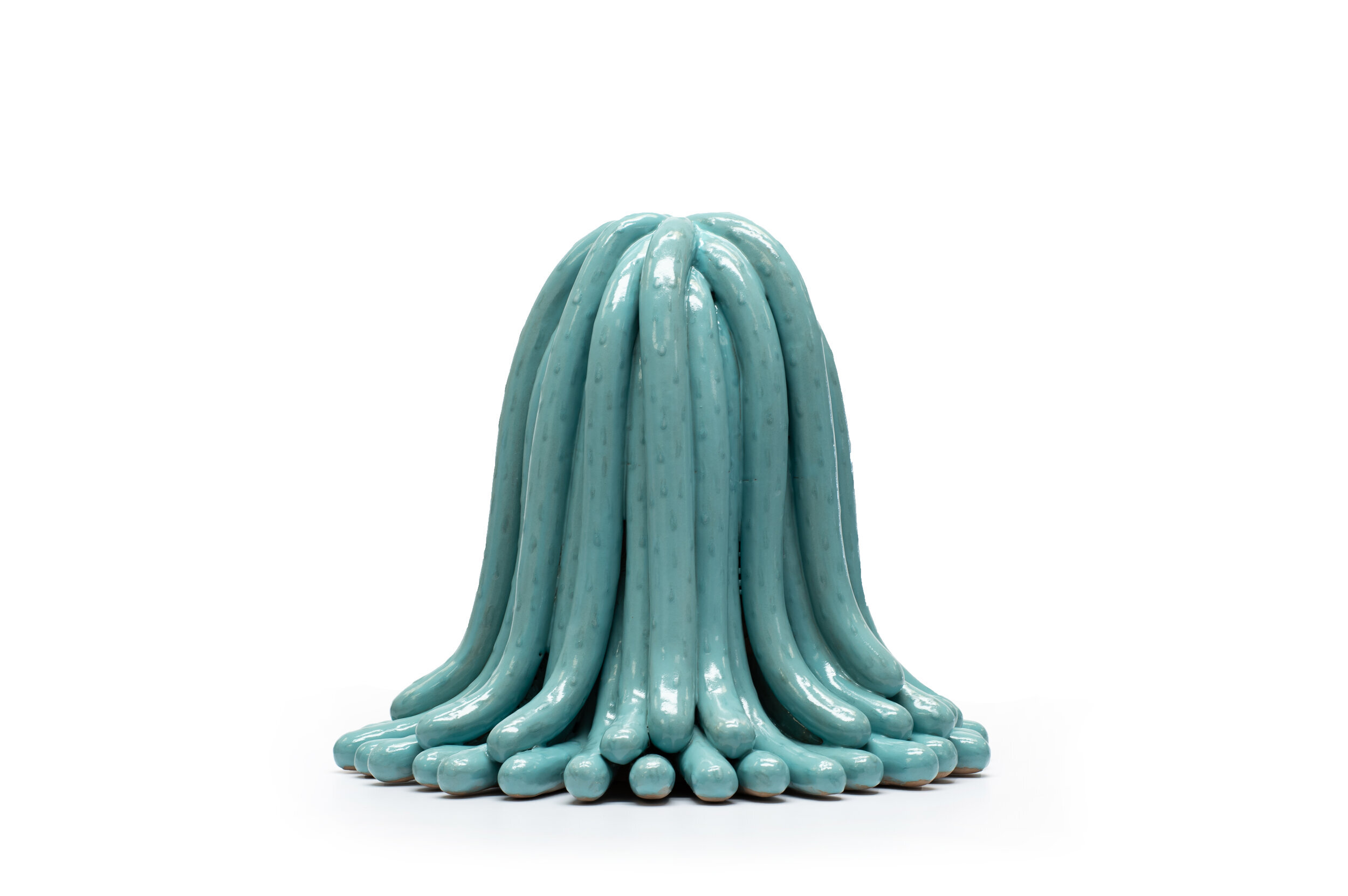
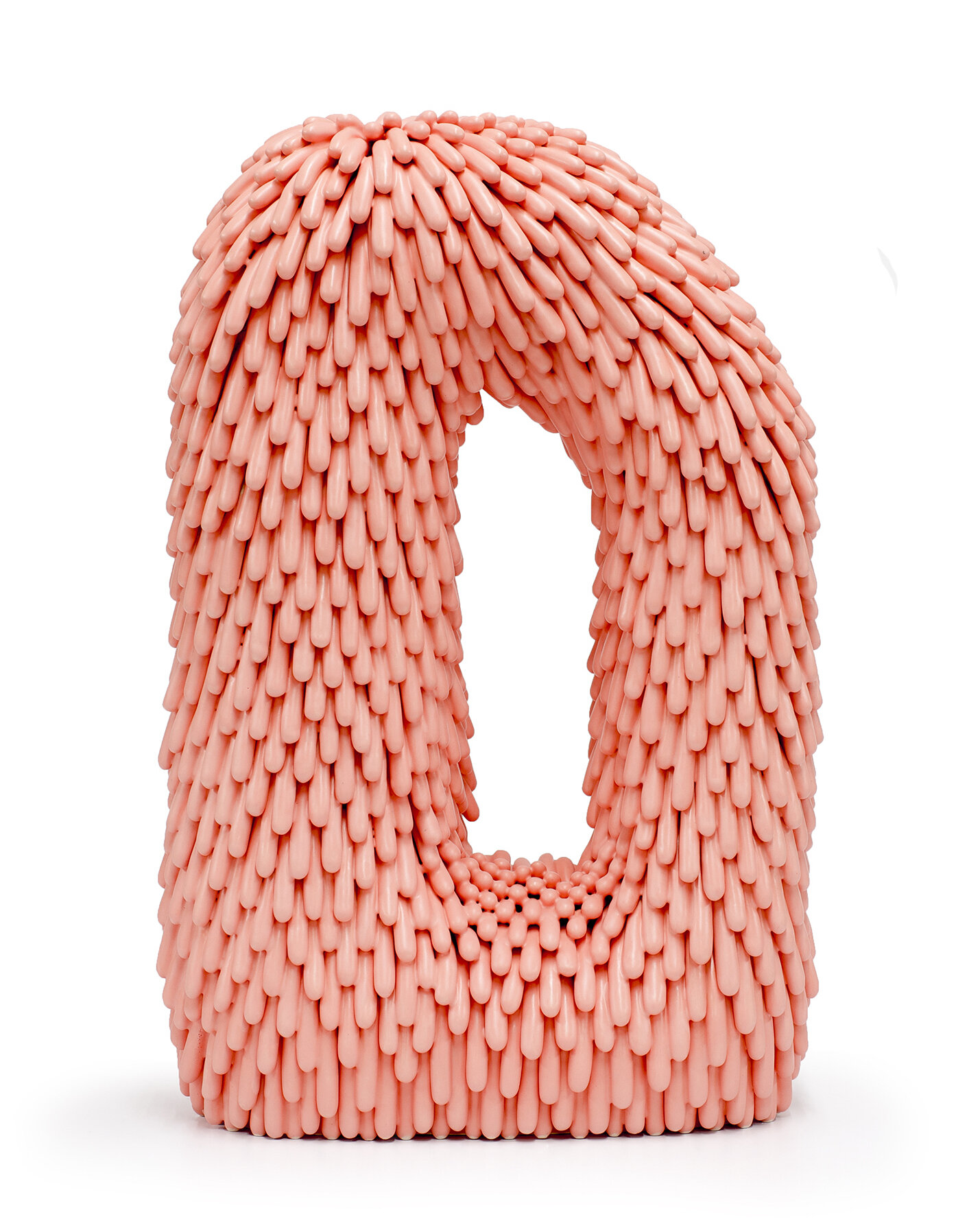
AAS: You have done many Artist-in-Residence programs throughout the US as well as in Rome. How important were those experiences?
LL: Residency programs are all different. They vary in duration, location, facilities, resources, expectations, etc. So, they all give something a little different. Residencies are great for research time. It allows for space to dig a little deeper into an idea, experiment or learn a new method. The new space is a nice boost in energy as well as the community that comes with it! I have meet some of my best friends at residencies and have taken big steps in my work there too.
AAS: You have lived and exhibited throughout the country and the world really. How would you describe the art scene in Arkansas to someone not familiar with Arkansas?
LL: I would have never imagined settling into Arkansas, but Northwest Arkansas is a beautiful and energetic community. We have a thriving art scene from institutions, organizations, and artist run spaces, etc. I could not have asked to land in a place that is so supportive of the arts and the outdoors. For those that have never been here, bring your bike when you come visit.


